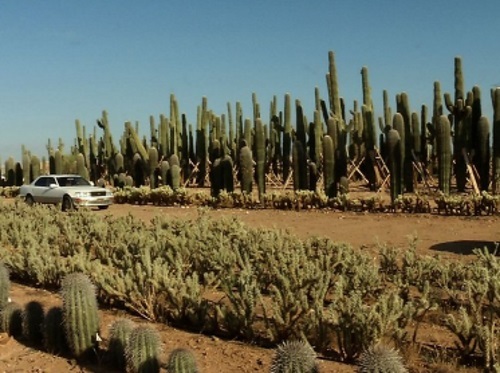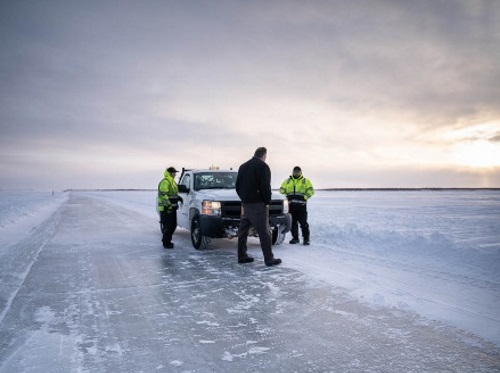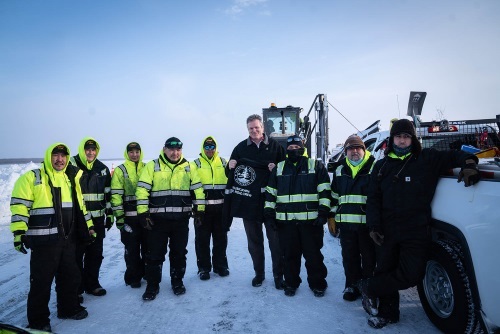The Arizona Department of Transportation recently completed a bridge replacement project near Globe, AZ, which triggered the return of an endangered species of cactus transplanted and preserved by the agency during the project’s four-year timeline.
[Above photo by Arizona DOT]
The U.S. 60 Pinto Creek Bridge is also home to the endangered hedgehog cactus, which grows only within a several-mile radius of the site. About a foot high, usually covered in spines and often with red flowers at the top, the species is listed as endangered by the U.S. Fish and Wildlife Service and is protected under Arizona law.
When the bridge replacement project began in 2018, a team comprised of biologists from the Arizona DOT and from the Desert Botanical Garden in Phoenix safely removed 34 cacti potentially affected by the construction work, then nurtured and propagated, replanting 61 total cacti in early March. This relocation effort is the latest step in a long-term partnership between the Arizona DOT and the Desert Botanical Garden to protect hedgehog cactuses that only grow in one tiny area of the state.
“ADOT has a responsibility to respect the environment and to make sure the plants and animals that make Arizona special are protected,” said Josh Fife, Arizona DOT’s biology team lead, in a statement. “We’re proud that the work we did will make sure the Arizona hedgehog cactus will continue to exist in the one special place in the world where they thrive.”
This cacti protection effort took on added importance in the summer of 2021, when wildfires swept through the project site, threatening some of the cacti in that area that were not removed because they were not threatened by construction.
“The plants on site could have easily been destroyed in the fire which is why it was a good thing these plants were taken back to Desert Botanical Garden out of harm’s way,” noted Steve Blackwell, conservation collections manager for Desert Botanical Garden.
“That was an important side benefit of taking cactus out when we did. Another valuable part of this process was that we were able to hand pollinate the plants at the Garden, clone the mother plants and develop a seed bank for future preservation,” he added. “This is a great win for the environment”





